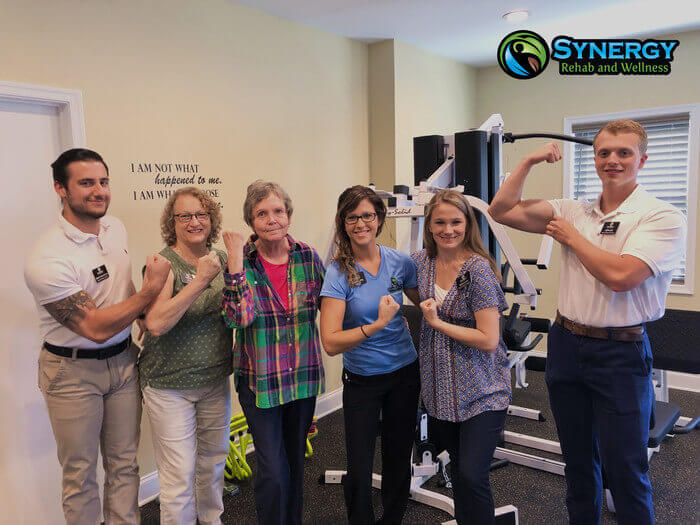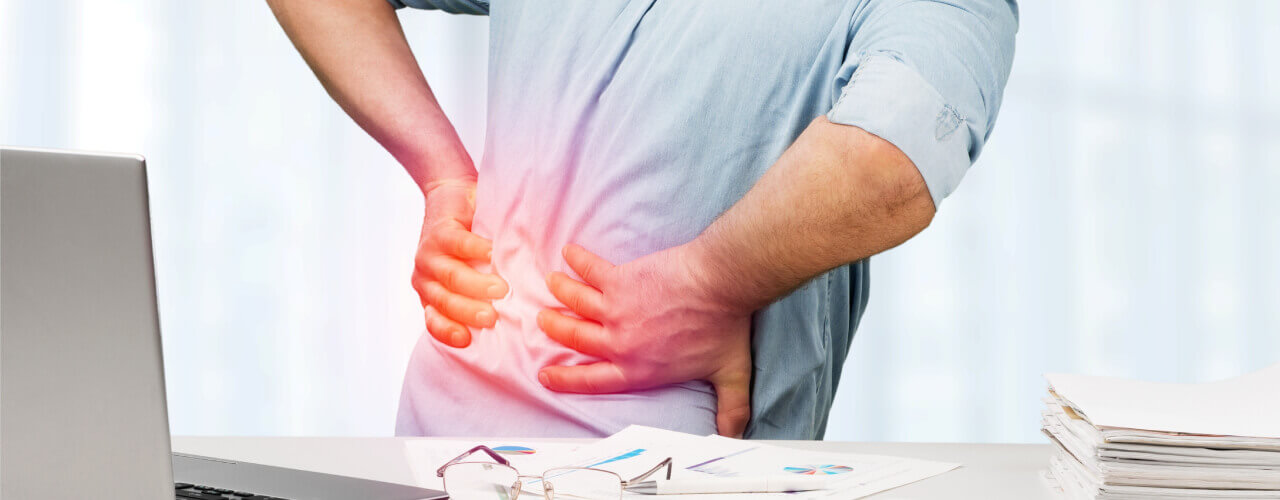Kick Hip and Knee Pains to the Curb with the Help of Physical Therapy!
Is it difficult for you to engage in your regular activities due to hip or knee pain? Whether your hip or knee pain occurs when you’re moving or sitting, physical therapy can help get you back to your regular routine.
Our innovative care strategies at Synergy Rehab & Wellness will help you find quick relief. Be sure to call our office for a consultation to find out how we can help alleviate your pain. No one should have to live in pain – we can help.
What is hip and knee pain?
The hips and knees are the body’s largest joints. They work in close coordination with each for mobility and support the body’s weight. The hips and knees have a demanding task.
The knee is made of several ligaments and muscles and is a complicated joint. Knee pain can wreak havoc on your quality of life. As a matter of fact, knee pain is the second most common cause of chronic pain. The hip joint consists of two main parts: the femoral head and the acetabulum.
The femoral head of a ball-shaped piece of bone, and the acetabulum is the socket into which the femoral head fits. Ligaments connect the ball to the socket. Like the knee, the hip is a complex structure. Hip pain can also affect younger people.
Why am I experiencing hip/knee pain?
Knee pain can be caused by a wide variety of injuries and diseases. It can be the result of auto accidents, recreational activities, sports or a slip and fall.
The most common causes of knee pain include:
- Gout
- Osteoarthritis
- Fractures around the knee
- Anterior injuries
- Ligament strains and sprains
- Overuse
In addition to causing pain, knee pain can affect mobility, reduce strength and affect muscle control.
Problems with the hip joint can result in pain in the groin or inside the hip.
When the pain is on the outside of the hip, it’s typically due to issues with tendons, muscles and ligaments that surround the hip joint. Hip pain can also be due to:
- Hip fracture
- Bursitis
- Rheumatoid arthritis
- Osteoarthritis
- Sprains
- Sciatica
With hip pain, you may experience intense pain or the inability to stand.
What can physical therapy do for me?
A physical therapist will do a gait evaluation, palpitation, range of motion measurements, function mobility tests to determine a treatment plan for your hip pain or knee pain.
Different modalities may be incorporated into your treatment plan, such as heat and ice therapy, ultrasound and specific exercises.
Your hip and knee joints have a tough job to do. The hips must bear the entire weight of your upper body, while your knees must bear all of that weight plus the weight of the hips and thighs. At the same time, these joints must be able to flex so that you can walk, run, dance, sit, play sports, and perform other everyday tasks without losing your balance.
It’s not hard to understand how these demands can produce chronic hip or knee pain over time. Hip or knee pain can also come about quite suddenly (and intensely) in response to an acute injury.
You may get pain relief when you are at the physical therapist and going through treatment, but what about when you go home? A major goal of your physical therapist is to heal your injuries over the long term.
The various exercises and treatments they use with you will steadily improve your condition so that you experience less pain on a daily basis. As your body gets stronger and more mobile, you are likely to experience less pain in your hips and knees.
Research has shown that joint mobilization techniques used by a physical therapist can help with long and short-term pain involving the hip. There is typically an improvement in mobility also.
Find relief with us
The sooner you seek physical therapy for knee or hip pain, the better. Research shows that patients who rehab their hip or knee pain with physical therapy within 15 days of symptom onset have less need for pain injections, medications, or surgical intervention.
Whatever stage of pain you’re in, it’s never too late to benefit from physical therapy. If you’re experiencing hip or knee pain, be sure to call and schedule a one-on-one consultation with one of our physical therapists.
We can help eliminate your pain, so you can return to your normal activities. We’ve helped many others suffering with hip and knee pain, and can help you, too. We’ll help you live a pain-free life.


